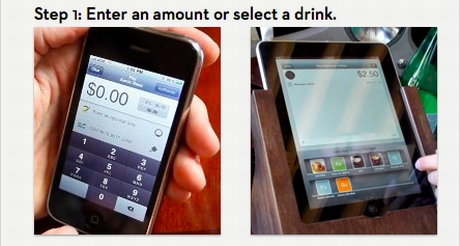Tech
Point of Sale usability study targets iPad & iPhone systems
UX Magazine focused on user experience magazine takes a look at how customers handle a real-world point-of-sale credit card reader system that uses the iPhone and iPad. Yes, bigger (er, screen size) is better in this case.


We observed one telling interaction that illustrated how the affordances of the iPad-cum-cash-register can lead to some awkwardness. In this case, the merchant swiped the customer's card (per usual) but immediately stepped away from the iPad to prepare another customer's drink. This left the payment process in limbo, and made the paying customer wonder what would happens next. After a moment or two, the customer glanced down at the iPad and noticed that the transaction had paused on the screen asking for a tip. He looked around, hesitated, and then gingerly reached over and pressed the $1 tip button. He did the same on the next screen, where he entered an email address for a receipt, only stepping closer to use the iPad keyboard. Throughout this episode, his body language spoke of his social curiosity for the iPad mixed with the social taboo of entering the domain of the merchant.Perhaps, it's more about customer education. The iPad payment system isn't exactly like the more-familiar POS credit card systems in stores. In the case of the Square system, the customer is in charge of completing the transaction and entering an e-mail address to receive a virtual receipt (an unfamiliar task and requirement), unlike the usual store terminals that print out receipts. A very interesting study. Thanks to reader Ayana Baltrip of design:speak for pointing it out to me.